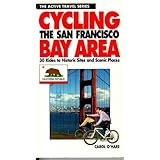
Average Reviews:

(More customer reviews)It seems we are all doomed to repeat history whether we learn from the past or not.
I started reading The Great Earthquake and Firestorms of 1906 a few days before Hurricane Katrina struck the Gulf Coast. As a native Northern Californian who has experienced many earthquakes including the Loma Prieta Quake of 1989 (in which a portion of the Bay Bridge and a freeway overpass in Oakland collapsed), I found that the first part of the book made me recall my own experiences and wonder uneasily what I would do when the next catastrophic quake strikes. By the time I finished the book, all I could think about were the similarities to the 2005 hurricane and its aftermath.
Author Philip Fradkin states right away that "San Franciscans, not the inanimate forces of nature, were primarily responsible for the extensive chaos, damage, injuries, and deaths in the great earthquake and firestorms of 1906. Despite ... warnings, they were dismissive of the past and failed to prepare for the future. During the earthquake and fire, military and civilian officials reacted foolishly under great duress."
One aspect of both tragedies that seemed to strike a chord with many people was the reporting of widespread looting. While people were still stranded on their roofs or trapped in flooded hospitals and nursing homes in New Orleans in 2005, and while the fires raged in San Francisco and people were without shelter and water in 1906, many officials could only focus on the theft of personal property. Mayor Schmitz of San Francisco illegally issued military, police, and civilian deputies to shoot looters on sight. In San Jose, the mayor announced looters would be hanged.
Not surprisingly there were tragic consequences, including an account of a grocer who, seeing that his store was in the path of a fire, opened the doors and announced that anyone could take whatever they wanted before the fire destroyed everything. Some grateful people did and were bayoneted by a national guardsman who didn't know what was going on. The only widespread looting that could ever be verified turned out to be that of Chinatown by "respectable" (white) citizens. Law enforcement officials including national guardsmen didn't discourage the Chinatown looters and were even seen to be appropriating items for themselves. Although the Chinese consul-general complained to the governor, nothing was done to stop that looting. On the other hand, price gouging all over the Bay Area was rampant, but it was not considered looting, and no one was punished for it.
Chinatown was destroyed. It was a neighborhood many white San Franciscans resented and they saw an opportunity to move the Chinese population to the outskirts of the city. In scenes reminiscent of thousands of New Orleaneans being moved from the Superdome to the Astrodome to even more distant shelters, the Chinatown refugees were relocated several times immediately after the earthquake because white San Franciscans did not want Chinese neighbors, even temporarily. The Chinatown residents resisted moves to relocate them permanently to a less desirable part of town. They threatened to move away from San Francisco entirely and take their lucrative businesses and tax revenues with them. In the end, Chinatown was rebuilt exactly where it had been before the earthquake.
The story of the heroic efforts of the firefighters to put out the horrific fires has been told before but Fradkin tells it well, with some unexpected details. Water was at a premium with the intense heat of the fires turning streams from hoses into steam. Firefighters used any liquid they could find including vinegar, wine (it was Northern California, after all), and even soda water siphons.
About half of The Great Earthquake and Firestorms of 1906 concerns the aftermath of the disasters: the relief effort, the rebuilding, the insurance claims, the political fallout, the blame, the effect on the people of the Bay Area.
Another truism is that history is written by the victors. Of course, there is no victor in a natural disaster, but the corollary is perhaps that history is written by the wealthy and the powerful. There are few first-hand accounts of the events of 1906 written by the poor or by the minorities. But Fradkin has pieced together a history that includes the stories of many who had been forgotten until now.
Click Here to see more reviews about: The Great Earthquake and Firestorms of 1906: How San Francisco Nearly Destroyed Itself, With a New Preface



















